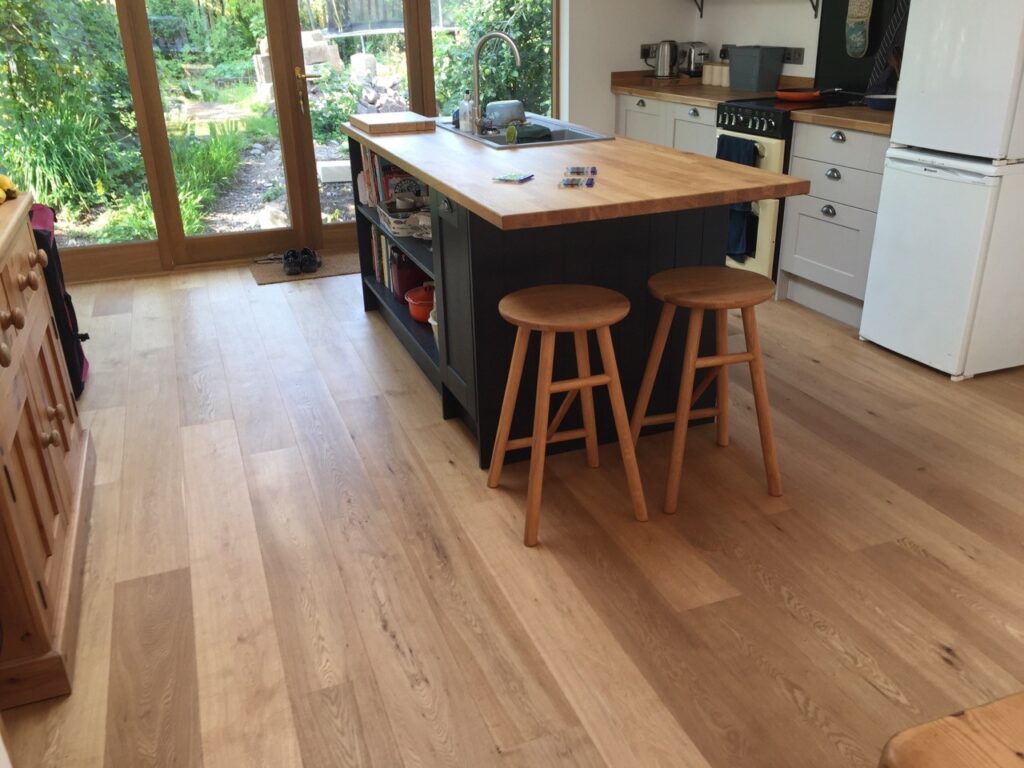What is Engineered Flooring

Making the Right Flooring Choice: Engineered Flooring vs. Laminate Flooring
When it comes to selecting the perfect flooring option for your home or commercial space, the decision often boils down to two popular choices: engineered flooring and laminate flooring. Both options offer a plethora of benefits, but understanding the differences between them is crucial in making an informed decision. In this comprehensive guide, we explore why engineered flooring emerges as the superior choice over laminate flooring in various aspects, from durability and aesthetics to versatility and value.
- Authenticity and Aesthetics: Engineered flooring stands out for its authentic look and feel, closely resembling solid hardwood flooring. Crafted from real wood veneers bonded together with high-quality adhesives, engineered flooring boasts the natural beauty and character of wood, including intricate grain patterns, knots, and textures. In contrast, laminate flooring, while offering a wide range of designs and finishes, lacks the depth and authenticity of real wood, often appearing more artificial and less convincing.
- Durability and Stability: Engineered flooring is engineered for superior durability and stability, making it a robust and long-lasting flooring option. Its multi-layer construction, comprising a solid wood veneer layer on top of high-density fiberboard or plywood core layers, provides exceptional strength and resistance to warping, swelling, and moisture damage. In comparison, laminate flooring consists of a high-density fiberboard core topped with a decorative paper layer and a protective wear layer. While laminate flooring is durable and scratch-resistant, it is more prone to moisture damage and may not withstand heavy foot traffic or exposure to water as well as engineered flooring.
- Versatility and Design Options: Engineered flooring offers unmatched versatility and design options, allowing homeowners to achieve their desired aesthetic effortlessly. Available in a wide array of wood species, finishes, and plank sizes, engineered flooring can complement any interior style, from traditional to contemporary. Additionally, engineered flooring can be installed over various subfloor types, including concrete, plywood, and existing flooring, making it suitable for virtually any room in the home. Laminate flooring also offers a variety of designs and finishes, but its design options are limited compared to engineered flooring, and it may not be as versatile in terms of installation options.
- Authenticity and Value: Engineered flooring adds value to your home by enhancing its aesthetic appeal and longevity. Its authentic wood appearance and superior quality make it a desirable feature for potential buyers, contributing to the overall resale value of the property. In contrast, laminate flooring, while initially cost-effective, may not offer the same level of authenticity and value as engineered flooring, potentially detracting from the perceived value of the home.
- Maintenance and Care: Engineered flooring is relatively low-maintenance and easy to care for, requiring regular sweeping, vacuuming, and occasional damp mopping to keep it looking its best. Its sealed surface is resistant to stains, scratches, and spills, making it ideal for busy households with pets and children. Laminate flooring also requires minimal maintenance, but it may be more susceptible to water damage and swelling if exposed to moisture for prolonged periods, requiring extra caution when cleaning and avoiding standing water.
- Environmental Impact: Engineered flooring is considered a more sustainable option compared to solid hardwood flooring, as it utilizes less wood and often incorporates recycled materials in its construction. Additionally, engineered flooring is compatible with radiant heating systems, enhancing energy efficiency and reducing environmental impact. Laminate flooring also offers environmental benefits, as it typically uses fewer natural resources than solid hardwood flooring and is recyclable at the end of its lifespan.
- Long-Term Investment: Ultimately, choosing engineered flooring over laminate flooring is a long-term investment in the beauty, durability, and value of your home. Engineered flooring offers the timeless elegance of real wood with added durability and stability, ensuring lasting beauty and performance for years to come. While laminate flooring may offer cost savings upfront, its limited lifespan and potential for wear and tear may necessitate replacement sooner, making engineered flooring a more cost-effective and sustainable choice in the long run.
Engineered flooring emerges as the superior choice over laminate flooring in terms of authenticity, durability, versatility, value, maintenance, environmental impact, and long-term investment. With its authentic wood appearance, superior durability, and wide range of design options, engineered flooring offers homeowners a timeless and practical flooring solution that enhances the beauty and functionality of any space. Whether you’re renovating your home or designing a new construction project, engineered flooring is the ideal choice for achieving the perfect balance of style, durability, and value.
